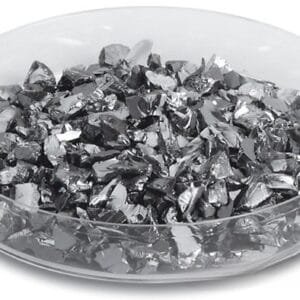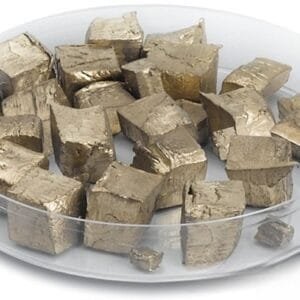Tantalum Evaporation Materials Description
Tantalum is a heavy, ductile, and hard metal with a melting point of 3,017°C, a density of 16.6 g/cc, and a vapor pressure of 10^-4 Torr at 2,590°C. Its dark blue-gray appearance and high corrosion resistance make it ideal for various applications. Tantalum is particularly resistant to chemical attack at temperatures below 150°C and can only be dissolved with hydrofluoric acid. Due to its non-toxic properties, it is commonly used in surgical implants and as a capacitor in electronics. It can also be alloyed with other metals to enhance strength and durability.
High-purity tantalum evaporation materials are essential for achieving high-quality deposited films in various processes. TFM specializes in producing tantalum evaporation materials with purity levels up to 99.95%, employing stringent quality assurance processes to ensure product reliability.

Tantalum Evaporation Materials Specification
| Material Type | Tantalum |
| Symbol | Ta |
| Color/Appearance | Gray Blue, Metallic |
| Thermal Conductivity | 57 W/m.K |
| Melting Point | 3,017°C |
| Coefficient of Thermal Expansion | 6.3 x 10-6/K |
| Synonyms | Tantalum pellets, Tantalum Pieces, Tantalum Evaporation Pellet, Ta Pellets, Ta Pieces, Ta Evaporation Pellet |
Tantalum Evaporation Materials Application
- Deposition Processes: Tantalum evaporation materials are utilized in semiconductor deposition, chemical vapor deposition (CVD), and physical vapor deposition (PVD).
- Optics: They are also employed in optics for applications such as wear protection, decorative coatings, and display technologies.
Tantalum Evaporation Materials Packaging
We carefully handle our tantalum evaporation materials to avoid damage during storage and transportation, ensuring that their quality is preserved in their original condition.
Get Contact
TFM offers tantalum evaporation materials in a variety of forms, purities, sizes, and prices. We focus on producing high-purity e-beam evaporation materials, emphasizing the highest possible density and the smallest average grain sizes. For current pricing on evaporation pellets and other deposition materials not listed, please contact us for more details.

 MSDS File
MSDS File



Reviews
There are no reviews yet.